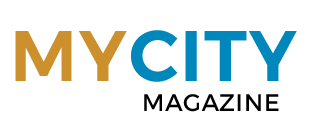Savings of both time and money are the greatest advantages with these dentures.
CAD/CAM dentures are a cost-effective treatment modality proving to be beneficial to both the clinician and the patient in regard to the number of appointments necessary to deliver final result – only two visits. Functional research through assessment of the digital manufacturing of dentures and patient evaluation shows positive results, leading to an increased use of digital manufacturing. The first CAD/CAM (Computer-Aided Design/Computer-Aided Manufacturing) denture was made in 1994.
The Advantages
Savings of both time and money are the greatest advantages with these dentures – less time off work, comparable cost, precise results, top-quality material, and improvement of long-term health. The key advantages of a computer-generated denture over a traditional denture include fewer appointments to achieve the final result, decreased from the typical seven to nine appointments down to only two or three. Secondly, accuracy and design leads to increased patient satisfaction and comfort. Lastly, the dentures are less bulky due to the technology used; for example, a thinner palate can be created to provide a more comfortable and better overall eating experience.
Advanced resin material with exceptional durability can be used in the process, thereby reducing the bacterial content on the dentures; this reduces infections and limits biofilm on toot surfaces. Easy maintenance is yet another advantage of the CAD/CAM dentures; the superior finish of this advanced, high-quality material serves as a unique coating, increasing the ease of daily maintenance.
The hallmark of the CAD/CAM system involves the recording and transferring of clinical information in two office visits to produce a high-quality, high-performance prosthesis that harmoniously re-establishes the patient’s function, aesthetics and phonetics.
How Does it Work?
The process begins with a scan of the oral tissues and supportive maxillomandibular structure into the computer, which then generates the denture. There are currently two commercial manufacturers, AvaDent® and Dentca.™ Current technology has advanced from 3D to a five-axis milling process, combining spatial direction and a tension bridge, which achieves more accurate molding.
The conventional PMMA (polymethylmethacrylate) resin is still used; however, advanced technologies offer a superior material in both strength and durability. Conventional denture material is much more porous, allowing more bacterial growth within the denture, which leads to odors, discolorations, and even infection. New scientific advances in this material have reduced the risk of these microorganism colonies on the surface of the dentures.
The manufactured partial dentures are currently being created using the conventional method. Partial dentures require complex frameworks with several parts. Generally, they consist of four parts: the base, plate, clasp, and the major and minor framework connector. The digital designing and fabrication of the partial is very complex, and therefore still evolving in the research process.
About the Author: Prabha Raju, DDS began her dentistry education in 1981 at Bangalore College, where she earned a Bachelor’s Degree in Dental Surgery in 1986. She went on to attend the University of New York from 1986-1990 and was granted the title of DDS. In March 2015, she received her certificate for Implantology from the International Congress of Oral Implantologists. At her Tender Dental Care facility in Burton, Dr. Raju practices all areas of dentistry, ranging from pediatric and adult preventative and restorative, to oral surgeries including extractions and implants.









